Sewerage device in the country: a comparison of 3 different options among themselves
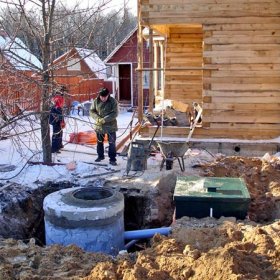
Independent sewage in the country with your own hands can be arranged in various ways. The plain cesspool, which our ancestors used successfully, is replaced by various septic tanks and even special local treatment plants, ready to compete with industrial equipment in large cities for efficiency. Each method of waste disposal has certain pros and cons. Let's look at which ones and determine what exactly to build on your site.
Content
What needs to be done before choosing a structure?
In order for the country sewerage to be arranged correctly, you must first draw up a layout of all its elements. These are the three main components:
- the internal part of the system, which is located in the house and combines all plumbing fixtures;
- a system of sewer pipes through which sewage is discharged from the house;
- sewage treatment plants where runoff is accumulated for further removal or processed and discharged into the soil.
If a detached toilet, bathhouse or other structure is located on the site, from which it is also necessary to drain drains, it is necessary to decide whether this building will be connected to the sewer system of the house or not. The first option is considered more preferable, but it is not always possible. Any decision must be reflected in the scheme of the sewer system of the site.
When drawing up a draft scheme, a number of important factors should be taken into account, such as:
- condition and type of soil;
- soil freezing depth in winter;
- groundwater depth;
- location of drinking water sources, etc.
All this information can be obtained from specialized organizations or by contacting your nearest neighbors for advice. At the same time, it does not hurt to find out exactly what type of sewerage is organized in neighboring areas and how effective it was during operation.
It is imperative that you pay attention to the type of soil when choosing a treatment plant. Light sandy soils quickly absorb moisture, which can lead to contamination of groundwater when runoff enters the soil. But heavy clay soils absorb moisture much more slowly, this often causes siltation of treatment facilities, such as a cesspool without a bottom, etc.
The depth of the trench under the pipes should be greater than the depth of freezing of the soil. It is necessary to take into account the position of the aquifer when treatment facilities are selected. They should be located at a certain distance from the well or well. Do not allow the intersection of sewer communications and the water system of the house.
If the site provides for the creation of a washbasin on the street, this element is not necessary to connect to a common house sewage system.It is enough to divert the drains from the wash basin to a separate drainage well — a small hole filled with sand, gravel, gravel, etc. To clean a small amount of soapy water this will be enough.
Given these nuances, it is easy to understand that the answer to the question of what type of sewage system is better to equip cannot be unequivocal. The main difference is the choice of the type of treatment plant. Most often, options are used: cesspools, septic tanks and local treatment stations.
Option # 1 - cesspool
Cesspools are the simplest type of local sewer for a summer residence. This method of disposal of human waste has long been known, but still remains relevant. Usually arrange a cesspool with or without bottom.
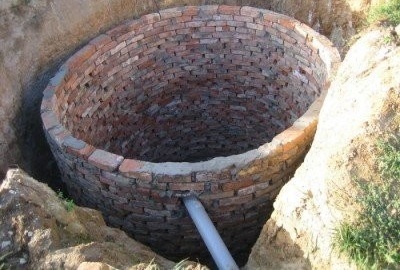
The walls of the cesspool for cottages can be made of brickwork. At the same time, it is important to take care of the proper waterproofing of the treatment plant.
The bottom structure is a foundation pit, the walls and bottom of which are insulated with a monolithic layer of concrete, brickwork, concrete rings and other structures or tanks that do not allow drains to enter the ground.
When constructing a cesspool without a bottom, instead of a concrete screed, a layer of drainage material is laid below: crushed stone, sand, broken brick, etc. In this case, the wastewater is purified and partially enters the ground.
Among the advantages of a cesspool, it is possible to note the simplicity of creating a design and the absence of the need to attract special equipment. However, the shortcomings of this ancient type of treatment facilities make us look for an acceptable alternative.
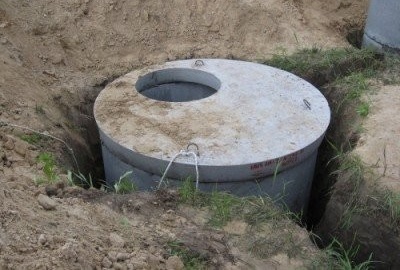
The fastest way to make a cesspool is to use prefabricated concrete rings. A concrete ceiling and a specially selected hatch are installed on top, which will protect the drains from freezing, and the air from unpleasant odors
The fact is that quite serious hygienic requirements are imposed on the creation of a cesspool. For example, the volume of drains in a house should not exceed one cubic meter per day. The level of groundwater, including during the spring flood, is important in order to avoid flooding of the cesspool and soil contamination. Finally, the accumulated waste must be regularly removed, and this is an additional cost for the services of sewage disposal facilities.
Option # 2 - septic tank device
Various types of septic tanks in summer cottages are becoming more popular. These are treatment facilities, which consist of several interconnected chambers. Anaerobic bacteria are added to the wastewater, which slowly recycle waste. The purified water is filtered and enters the soil. As a result, the need for waste collection is minimized or completely absent.
The main thing in a septic tank is to choose the right capacity. It must be completely sealed and resistant to mechanical damage, aggressive substances, seasonal temperature extremes and other similar factors. Under these conditions, any suitable plastic tank can be safely used as a septic tank. You can also choose a ready-made industrial model of a container for a septic tank. This option will cost a little more, but it is a more reliable and simple solution in terms of labor costs.
It is also possible to create a summer cottage sewer of this type with your own hands, only you will have to use not one, but two cesspools. The first pit must be made with a concrete bottom, and in the second put a layer of drainage. Connect the tank with an inclined pipe - overflow. The effluents fall into the first pit, where solid waste accumulates, and liquid waste, reaching overflow, enters the second tank. Here they pass through a filter and enter the soil. From the first section of the septic tank, it is necessary to periodically remove waste, but they do it much less often than when operating a conventional cesspool.
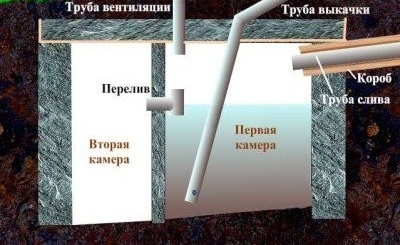
Modern septic tanks can minimize the need for the removal of accumulated effluents or completely get rid of this problem. It is important to choose the right container for the septic tank
If it is decided to use a septic tank as a sewage system in a summer cottage, it should be remembered that anaerobic bacteria that process waste can be sensitive to certain chemicals, such as chlorine. Will have to be more careful in choosing household chemicals for a summer residence.
Option # 3 - local cleaning stations
Ready-made cleaning stations, which are offered by manufacturers, practically do not cause any problems to the owner of the cottage. All that is required of him: to choose a suitable model of the station, pay for it and order installation. Unfortunately, saving on the installation of the device will not work, since the preparation and commissioning of the cleaning station should be done exclusively by specialists.
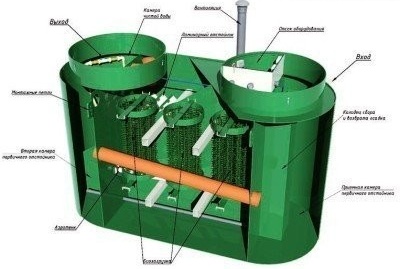
Modern local treatment plants are expensive, but are highly efficient in the removal and processing of even large amounts of wastewater
The main disadvantage of local treatment plants, abbreviated as VOCs, is the high price. This costly acquisition will be justified for a solid, large cottage. And in a small area, less expensive options for a sewerage device in the country will be more acceptable.
VOC maintenance is very rare and requires the least effort. All operations can be entrusted to employees of the company that installed the structure.

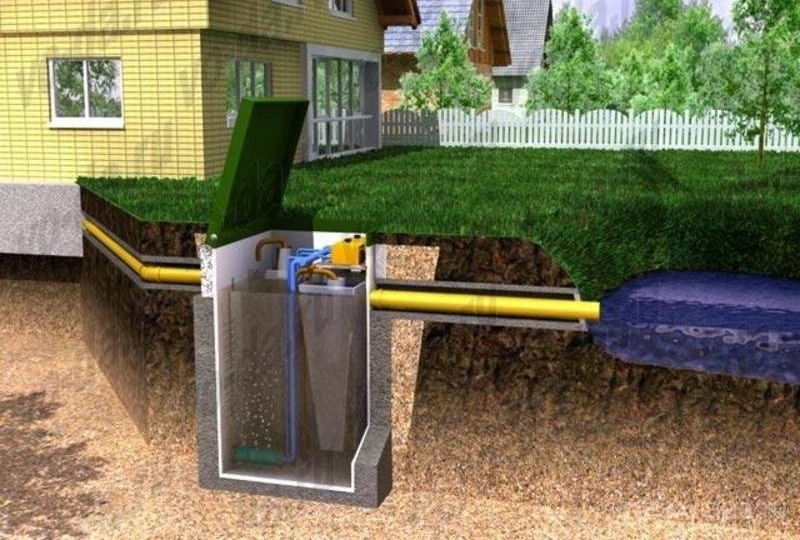
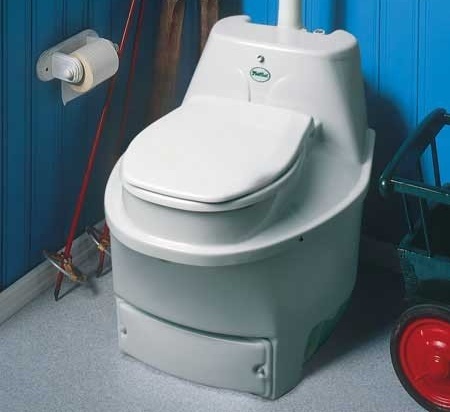
1 comment